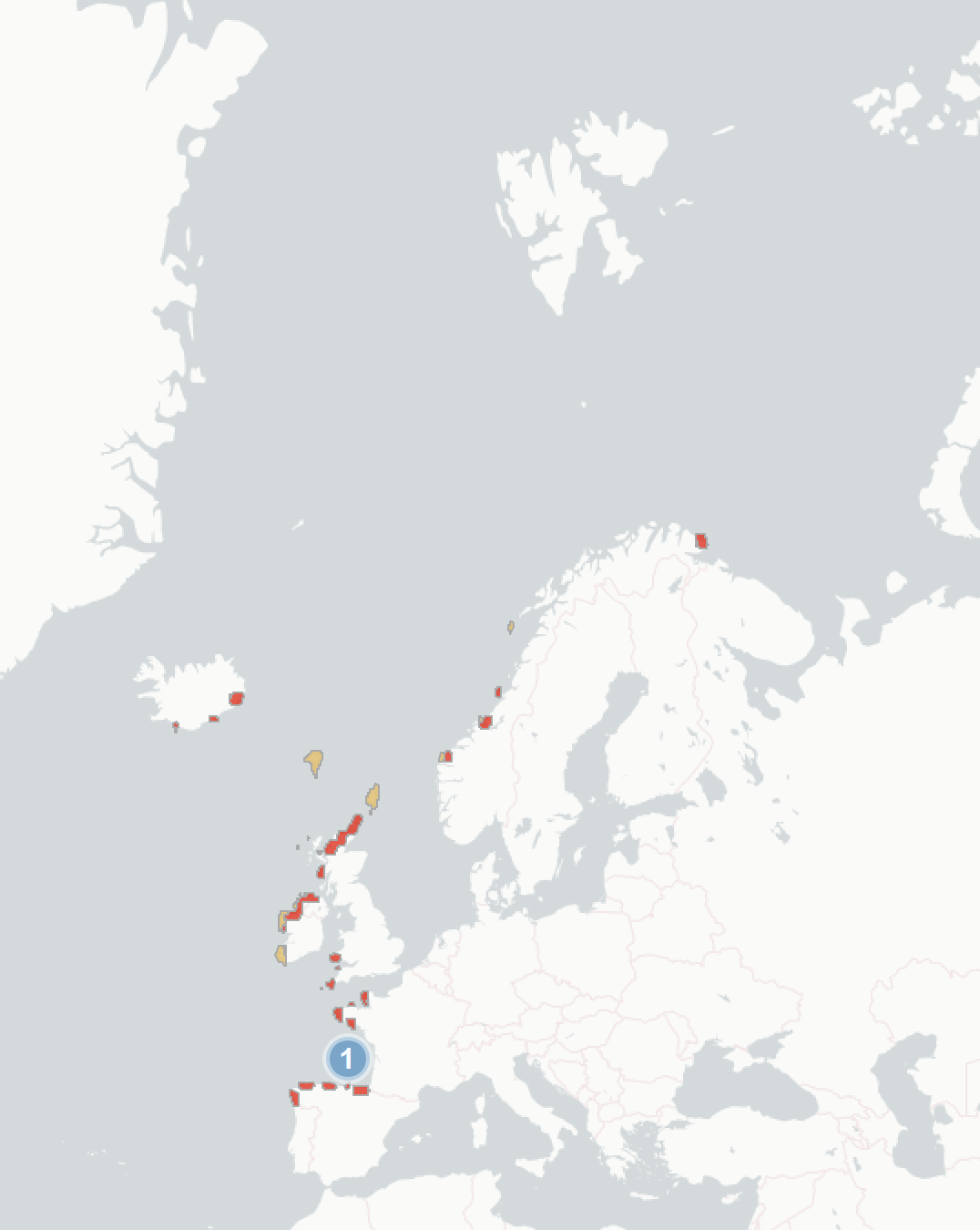European Storm-petrel (Hydrobates pelagicus): vulnerability to climate change
Evidence for exposure
Potential changes in breeding habitat suitability:
-
Current breeding area that is likely to become less suitable (72% of current range)
-
Current breeding area that is likely to remain suitable (28%)
-
Current breeding area that is likely to become more suitable (0%)
Current impacts to European Storm-petrels attributed to climate change:
-
Negative Impact: High winds and storms in the non-breeding season causes increased mortality, lower body condition, and reduced breeding success. While individual extreme climate events are difficult to attribute to climate change, projections predict such events will become more common and prolonged in the future.
Predicted changes in key prey species:
No key prey species are predicted to decline for this species.
Sensitivity
-
Studies in other parts of this species range have found it is sensitive to high rainfall and low temperatures, which cause high chick mortality. If climate change results in lower temperatures and higher rainfall, this may heavily impact juvenile survival
-
European storm-petrels rely on wind patterns to fly and navigate, at high wind speeds storm-petrels are vulnerable to being storm-driven. Higher incidence of extreme wind events is likely to have significant impacts on foraging ability and marine distribution. Storms are also known to have some negative effects on storm-petrel breeding success as they create difficult foraging conditions and lower body condition.
-
This species has a long generation length (>10 years), which may slow recovery from severe impacts and increases population extinction risk
Adaptive capacity
-
Analysis of laying dates has shown that, regardless of SST and weather conditions, there is little variance in storm-petrel phenology. It is unlikely they will adapt their laying date to changing conditions, which could make them vulnerable to climate change. However, additional evidence has found that changes in marine temperature do not affect breeding success in the storm-petrels in the Mediterranean.
-
In response to poor breeding conditions, European storm-petrels can skip breeding events. This could buffer the negative effects of climate change, as shearwaters could maintain body condition even in poor years by skipping breeding.
-
Species has very high fidelity to breeding areas. Unlikely to disperse and colonise new areas readily. However, there is anecdotal evidence that european storm-petrels will recolonise old breeding sites if key threats are removed (e.g. predators).
-
European storm-petrels have flexible foraging behaviour and prey on a wide variety of prey species. They are likely to take advantage of alternative prey sources if climate changes impacts one or a few prey species
-
There is very limited mixing between populations in storm-petrels, this can be adaptive (as it increase likelihood of local adaptation) or non-adaptive (as immigration to support populations is unlikely).
